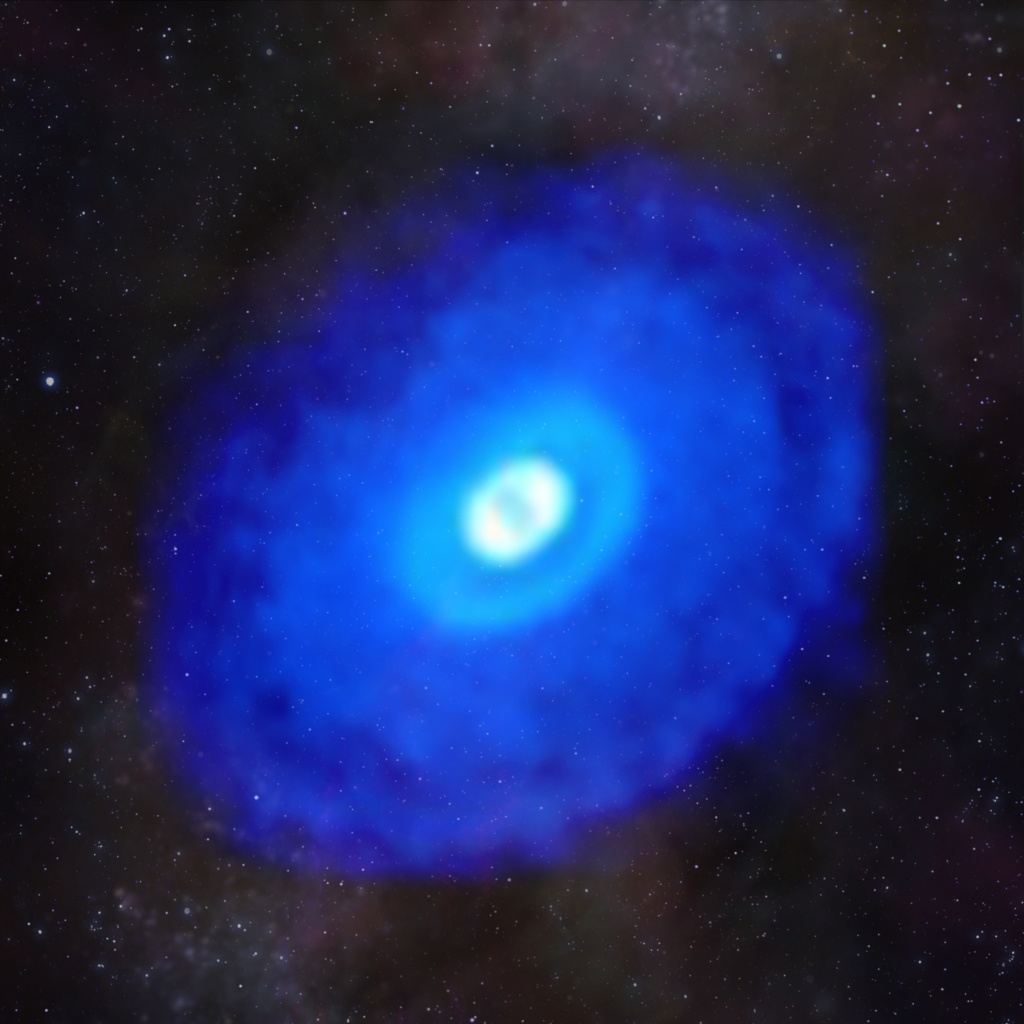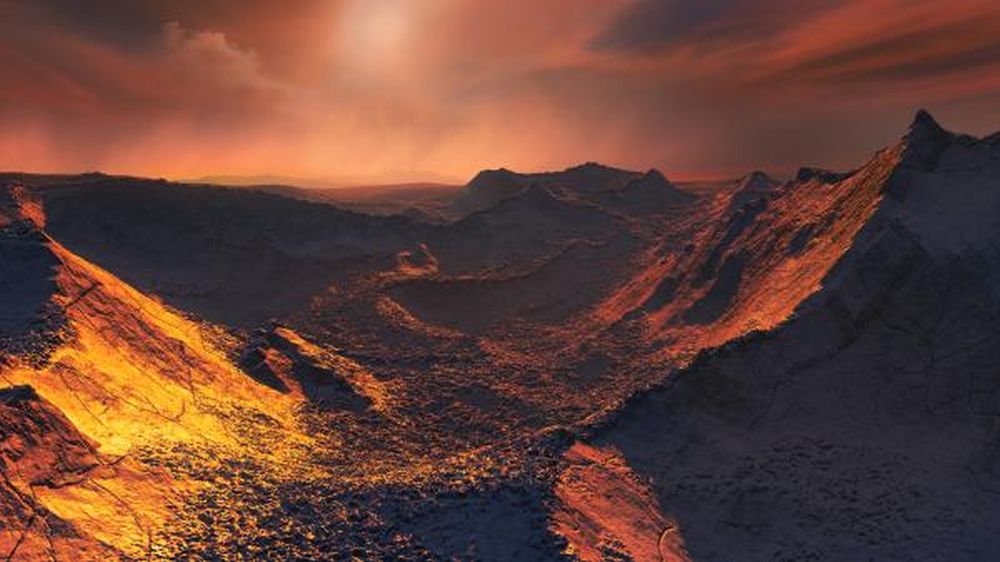Understanding the birth of a planet is a challenging puzzle. We know that planets form inside clouds of gas and dust that surround new stars, known as protoplanetary disks. But grasping exactly how that process works – connecting the dots between a dust cloud and a finished planet – is not easy. An international team of astronomers is attempting to unlock some of those secrets, and have recently completed the most extensive chemical composition mapping of several protoplanetary discs around five young stars. Their research allows them to begin to piece together the chemical makeup of future exoplanets, offering a glimpse into the formation of new alien worlds.
Continue reading “Astronomers See Carbon-Rich Nebulae Where Planets are Forming”The Strange, Misshapen Orbits of Planet-Forming Disks in a Triple-Star System
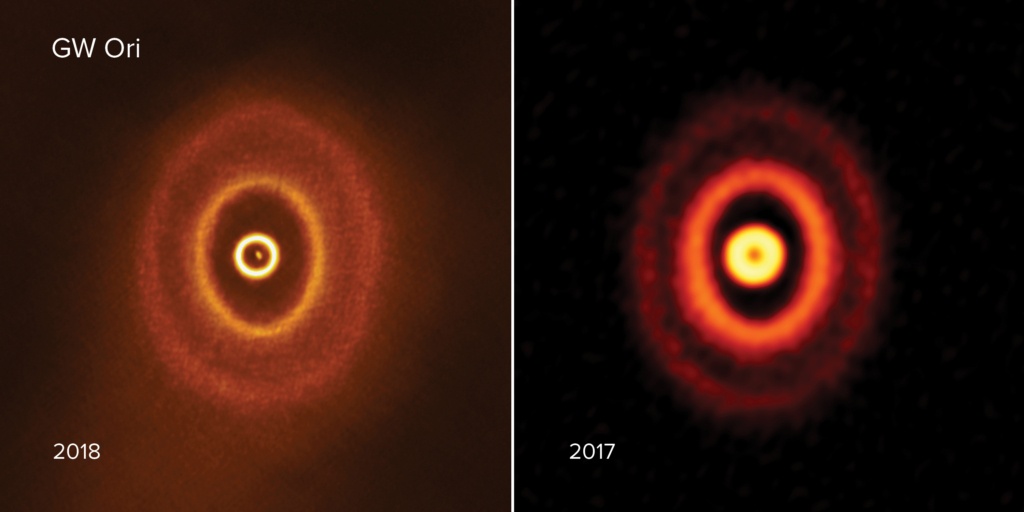
Whatever we grow up with, we think of as normal. Our single solitary yellow star seems normal to us, with planets orbiting on the same, aligned ecliptic. But most stars aren’t alone; most are in binary relationships. And some are in triple-star systems.
And the planet-forming disks around those three-star systems can exhibit some misshapen orbits.
Continue reading “The Strange, Misshapen Orbits of Planet-Forming Disks in a Triple-Star System”More Pictures of Planet-Forming Disks Around Young Stars
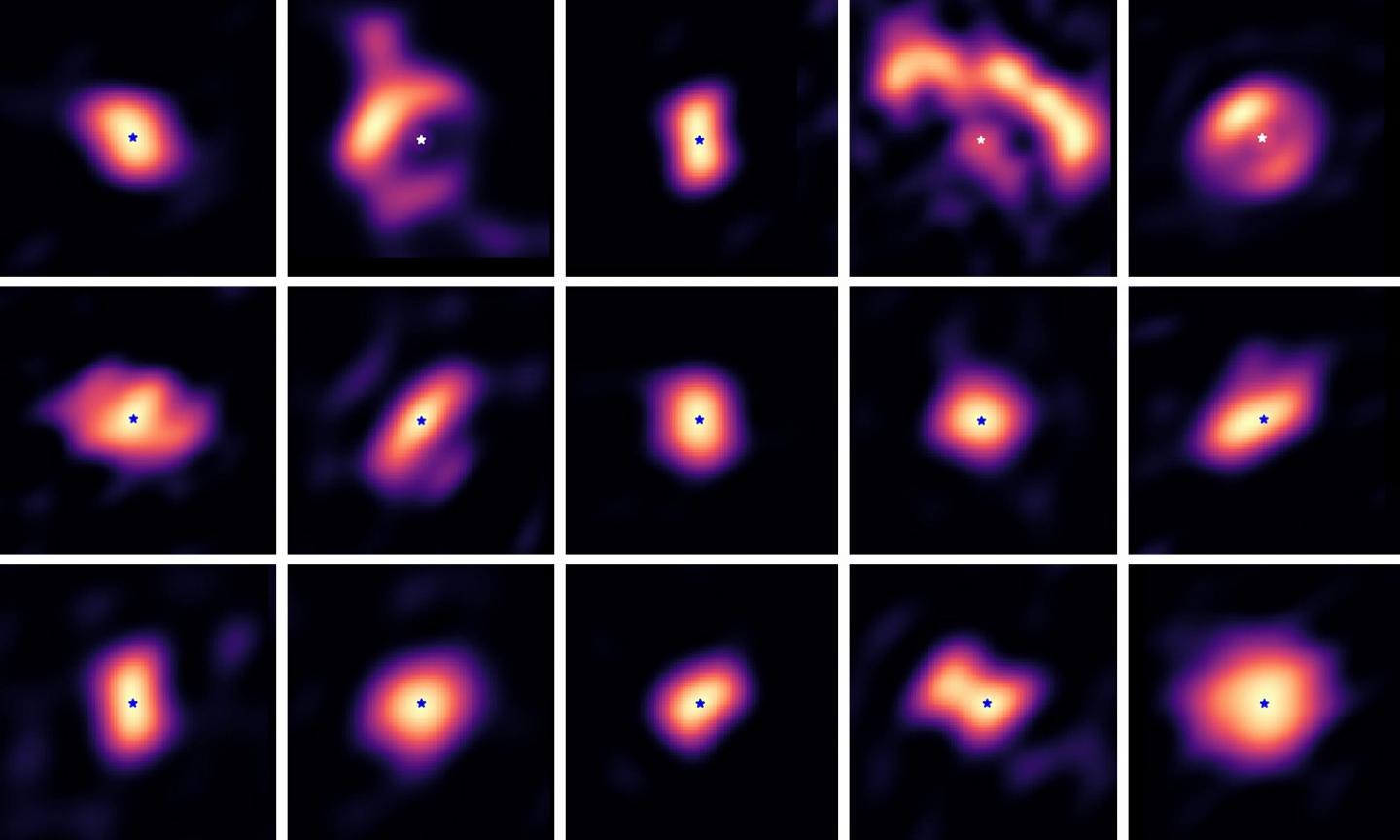
Astronomy is advancing to the point where we can see planets forming around young stars. This was an unthinkable development only a few years ago. In fact, it was only two years ago that astronomers captured the first image of a newly-forming planet.
Now there are more and more studies into how planets form, including a new one with fifteen images of planet-forming disks around young stars.
Continue reading “More Pictures of Planet-Forming Disks Around Young Stars”Habitability of Planets Will Depend on Their Interiors
A lot of the headlines and discussion around the habitability of exoplanets is focused on their proximity to their star and on the presence of water. It makes sense, because those are severely limiting factors. But those planetary characteristics are really just a starting point for the habitable/not habitable discussion. What happens in a planet’s interior is also important.
Continue reading “Habitability of Planets Will Depend on Their Interiors”Bizarre Double Star System Flipped its Planetary Disk on its Side

Astronomers theorize that when our Sun was still young, it was surrounded by a disc of dust and gas from which the planets eventually formed. It is further theorized that the majority of stars in our Universe are initially surrounded in this way by a “protoplanetary disk“, and that in roughly 30% of cases, these disks will go on to become a planet or system of planets.
Ordinarily, these disks are thought to orbit around the equatorial band (aka. the ecliptic) of a star or system of stars. However, new research conducted by an international group of scientists has discovered the first example of a binary star system where the orientation was flipped and the disk now orbits the stars around their poles (perpendicular to the ecliptic).
Continue reading “Bizarre Double Star System Flipped its Planetary Disk on its Side”Here are 20 Protoplanetary Disks, With Newly Forming Planets Carving Out Gaps in the Gas and Dust

The hunt for other planets in our galaxy has heated up in the past few decades, with 3869 planets being detected in 2,886 systems and another 2,898 candidates awaiting confirmation. Though the discovery of these planets has taught scientists much about the kinds of planets that exist in our galaxy, there is still much we do not know about the process of planetary formation.
To answer these questions, an international team recently used the Atacama Large Millimeter/submillimeter Array (ALMA) to conduct the first large-scale, high-resolution survey of protoplanetary disks around nearby stars. Known as the Disk Substructures at High Angular Resolution Project (DSHARP), this program yielded high-resolution images of 20 nearby systems where dust and gas was in the process of forming new planets.
Chaotic Wombs May Birth Wrong-way Planets
We’ve heard it time and time again. When it comes to new exoplanet findings, our conventional wisdom never holds. So the surprise that a batch of extrasolar planets are moving retrograde, orbiting in directions opposite to the way their stars are spinning, shouldn’t come as a surprise.
Then again, maybe it should. These discoveries turned the long-standing view of how planets form on its head. Now Eduard Vorobyov at the University of Vienna and colleagues argue that chaotic conditions in the planetary system’s gaseous wombs may be to blame.
Theorists have long assumed that stars and their planetary companions assemble from spinning disks of gas and dust. This causes the star to spin in one direction, while its planetary companions follow suit. “In some fundamental sense, the cloud carries a ‘genetic code’ that obligates the formation of corotating stars and planets,” Vorobyov told Universe Today.
So how do these wrong-way exoplanets get out of whack? Some theorists have postulated that the gravitational tugs from neighbors might change their direction of rotation. But this is pretty difficult for massive planets.
So Vorobyov and his colleagues took a second look at the initial clouds in which stars and their corotating planets form. Initially, astronomers thought that clouds evolve in relative isolation. Recent simulations, however, suggest that “clouds form within a turbulent environment and move like bees in a hive from one place to another,” said Vorobyov.
So a moving cloud might end up in an environment that’s quite different from the one it had at birth. It could even find itself surrounded by gas that’s swirling opposite to its spin.
Vorobyov and colleagues ran simulations that place clouds into environments with various characteristics. Sure enough when a gas cloud is surrounded by gas that’s swirling in the opposite direction, the inner disk continues to rotate in the same direction of the star, but the outer disk flips and starts to rotate in the opposite direction.
Over time, grains glom together in both disks until they ultimately form planets. Any inner planets will rotate with the star and any outer planets will rotate opposite the star.
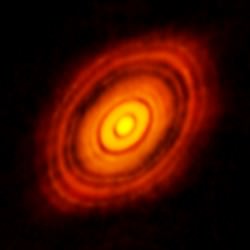
But there are a few interesting byproducts. The first is that there’s a gap between the two counter-rotating disks. So whenever we see gaps in protoplanetary disks (like the one ALMA spotted a few weeks ago), these gaps might not be the result of a forming planet, but instead a null space between two counter-rotating disks.
The second is that the outer disk produces shock waves, which can trigger early planet formation. “The idea that planets would naturally form in the first very short (100,000 to 400,000 years) lifetime of the protostar would be profound, even if some of the planets were later destroyed,” expert Joel Green from the University of Texas told Universe Today.
This stands in contrast to the idea that planets collect their mass from collisions. It’s a process that astronomers think takes millions of years. But Green isn’t completely convinced by the simulations just yet as there seems to be no physical reason for the outer disks to end up counter rotating.
It all really comes down to the question of nature vs. nurture. “In some philosophical sense, the nurture (external environment) may completely change the nature of planet-forming disks,” said Vorobyov.
The results will be published in Astronomy & Astrophysics and are available online.
ALMA Observes Binary Star System with Wacky Disks
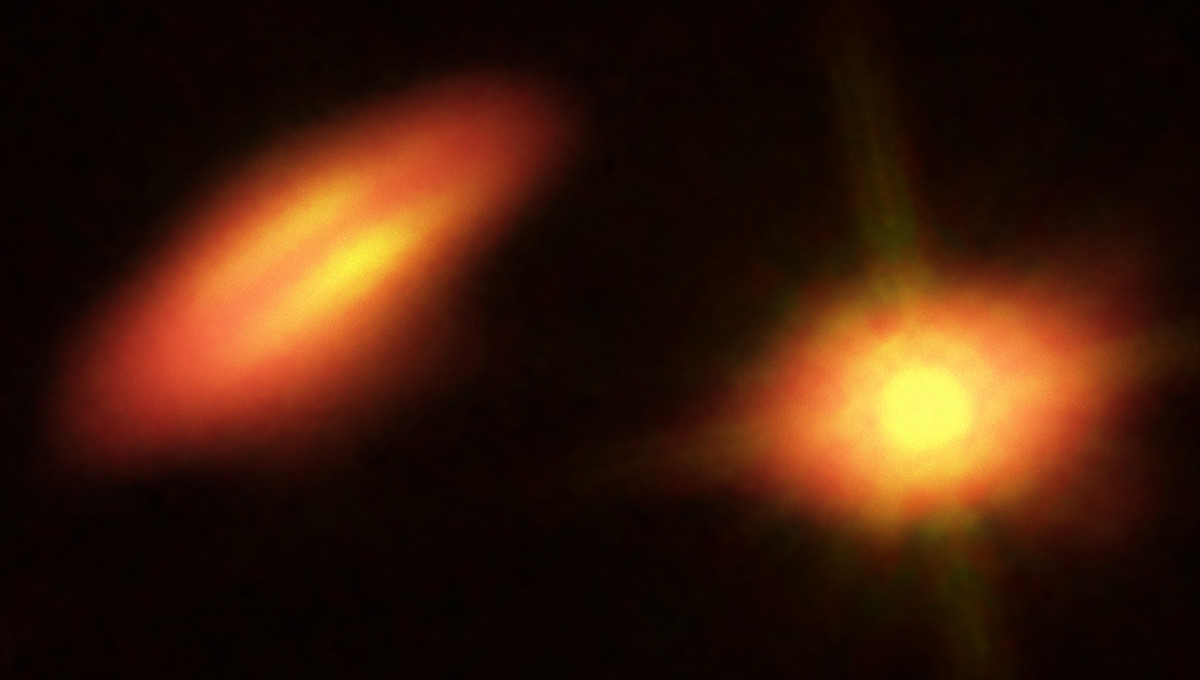
When it comes to exoplanets, we’ve discovered an array of extremes — alien worlds that seem more like science fiction than reality. But there are few environments more extreme than a binary star system in which planet formation can occur. Powerful gravitational perturbations from the two stars can easily grind a planet to dust, let alone prevent it from forming in the first place.
A new study has uncovered a striking pair of wildly misaligned planet-forming disks in the young binary star system HK Tau. It’s the clearest picture ever of protoplanetary disks around a double star, shedding light on the birth and eventual orbit of the planets in a multiple star system.
The “Atacama Large Millimeter/submillimeter Array (ALMA) has given us an unprecedented view of a main star and its binary companion sporting mutually misaligned protoplanetary disks,” said Eric Jensen from Swarthmore College in a press release. “In fact, we may be seeing the formation of a solar system that may never settle down.”
The two stars in the system — located roughly 450 light-years away in the constellation Taurus — are less than four million years old and are separated by about 58 billion kilometers, or 13 times the distance of Neptune from the Sun.
ALMA’s high sensitivity and unprecedented resolution allowed Jensen and colleagues to fully resolve the rotation of HK Tau’s two protoplanetary disks.
“It’s easier to observe spread-out gas and dust because it has more surface area – just in the same way that it might be hard to see a small piece of chalk from a distance, but if you ground up the chalk and dispersed the cloud of chalk dust, you could see it from farther away,” Jensen told Universe Today.
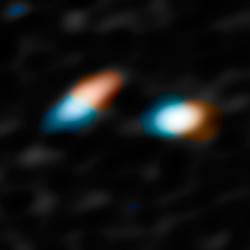
The carbon monoxide gas orbits both stars in two broad belts that are clearly rotating — the side spinning away from us is redshifted, while the side spinning toward us is blueshifted.
“What we find in this binary system is that the two orbiting disks are oriented very differently from each other, with about a 60 or 70 degree angle between their orbital planes,” Jensen told Universe Today. Because the disks are so misaligned it’s clear that at least one is also out of sync with the orbit of their host stars.
“This clear misalignment has given us a remarkable look at a young binary star system,” said coauthor Rachel Akeson from the NASA Exoplanet Science Institute at the California Institute of Technology. “Though there have been hints before that this type of misaligned system exists, this is the cleanest and most striking example.”
Stars and planets form out of vast clouds of dust and gas. Small pockets in these clouds collapse under the pull of gravity. But as the pocket shrinks, it spins rapidly, with the outer region flattening into a turbulent disk. Eventually the central pocket becomes so hot and dense that it ignites nuclear fusion — in the birth of a star — while the outer disk — now the protoplanetary disk — begins to form planets.
Despite forming from a flat, regular disk, planets can end up in highly eccentric orbits, and may be misaligned with the star’s equator. One likely explanation is that a binary companion star influences them — but only if its orbit is initially misaligned with the planets.
“Because these disks are misaligned with the binary orbit, then so too will be the orbits of any planets they form,” Jensen told Universe Today. “So in the long run, the binary companion will influence those planet orbits, causing them to oscillate and tend to come more into line with the binary orbit, and at the same time become more eccentric.”
Looking forward, the researchers want to determine if this type of system is typical or not. If it is, then tidal forces from companion stars may easily explain the orbital properties that make the present sample of exoplanets so unlike the planets of our own Solar System.
The results will appear in Nature on July 31, 2014.
Catching Planets in the Womb

[/caption]
Awhile ago I wrote on the difficulty of finding young planets. There, I mentioned one team announcing the potential discovery of a planet a mere 1-5 million years old. But what are astronomers to do if they want to find even younger planets?
The chief difficulty in this instance is that such planets would still be hidden in the circumstellar disks from which they formed, hiding them from direct observation. Additionally, depending on how far along the process had advanced, they may not yet have accreted sufficient mass to show up in radial velocity surveys, if such surveys could even been conducted with interference from the disc.
One way astronomers have proposed to detect forming planets is to observe their effects on the disc itself. This could come in a number of ways. One would be for the planet to carve out grooves in the disc, clearing its orbit as it sweeps up matter. Another possibility is to look for the “shadows” caused by the local overdensity an accreting planet would cause.
But recently, another new method caught my eye. In this one, proposed by astronomers at the Crimean National Observatory in the Ukraine, astronomers could potentially look for again turns to the characteristics of the parent star. Earlier, astronomers had made a link between the properties of the disc around classes of protostars (such as T Tauri and Herbig Ae stars) and the variable luminosity of the star itself.
The authors suggest that, “[t]wo different mechanisms can be involved in interpretation of these results: 1) circumstellar extinction and 2) accretion.” In either scenario, a body present in the disc itself concentrating the material would be necessary to explain these results. In the first case, a protoplanet would draw a swarm of material around it again creating a local overdensity in the disc which would be dragged around with the planet, creating a dimming of the star as it passed near the line of sight. In the second, the planet would draw out tidal structures in the disc in much the same way tidal interactions can draw out spiral structure in galaxies. As these veins of matter fall onto the star, it feeds the star, temporarily causing an outburst and increasing the brightness.
The team conducted an analysis of periodicity in several protostellar systems and found several instances in which the periods were similar to those of planetary systems discovered around mature stars. Around one star, V866 Sco, they discovered, “two distinct periods in light variations, 6.78 and 24.78 days, that persist over several years.” They note that the shorter period is likely “due to axial rotation of the star” but could not offer an explanation for the longer period which leaves it open to the possibility of being a forming planet and they suggest that spectral observations may be possible. Other systems the team analyzed had periods ranging from 25 – 120 days also hinting at the possibility for young planetary systems.
The advantage to this method is that finding candidate systems can be done relatively easily using photometric systems which can survey great numbers of stars at once whereas radial velocity measurements generally require dedicated observations on a single object. This would allow astronomers to discriminate against candidates unlikely to harbor forming planets. Ultimately, finding young systems with forming planets will help astronomers understand how these systems form and evolve and why our own system is so different than many others found thus far.
Astronomy Without A Telescope – No Metal, No Planet
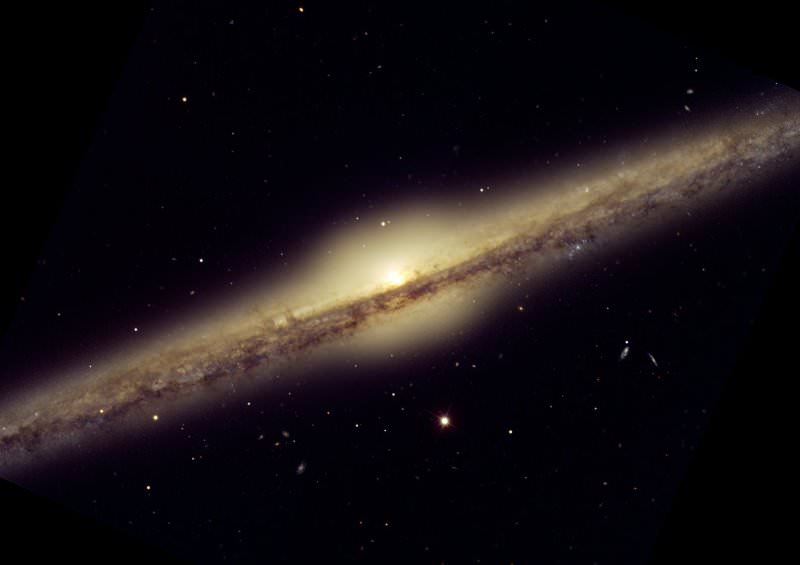
[/caption]
A Japanese team of astronomers have reported a strong correlation between the metallicity of dusty protoplanetary disks and their longevity. From this finding they propose that low metallicity stars are much less likely to have planets, including gas giants, due to the shorter lifetime of their protoplanetary disks.
As you are probably aware, ‘metal’ is astronomy-speak for anything higher up the periodic table than hydrogen and helium. The Milky Way has a metallicity gradient – where metallicity drops markedly the further out you go. In the extreme outer galaxy, about 18 kiloparsecs out from the centre, the metallicity of stars is only 10% that of the Sun (which is about 8 kiloparsecs – or around 25,000 light years – out from the centre).
This study compared young star clusters within stellar nurseries with relatively high metallicity (like the Orion nebula) against more distant clusters in the outer galaxy within low metallicity nurseries (like Digel Cloud 2).
The study’s conclusions are based on the assumption that the radiation output of stars with dense protoplanetary disks will have an excess of near and mid-infra red wavelengths. This is largely because the star heats its surrounding protoplanetary disk, making the disk radiate in infra-red.
The research team used the 8.2 metre Subaru Telescope and a procedure called JHK photometry to identify a measure they called ‘disk fraction’, representing the density of the protoplanetary disk (as determined by the excess of infra red radiation). They also used another established mass-luminosity relation measure to determine the age of the clusters.
Graphing disk fraction over age for populations of Sun-equivalent metallicity stars versus populations of low metallicity stars in the outer galaxy suggests that the protoplanetary disks of those low metallicity stars disperse much quicker.
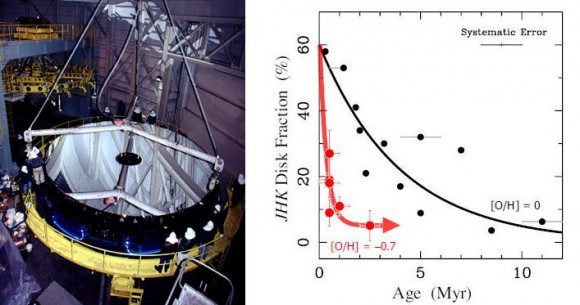
The authors suggest that the process of photoevaporation may underlie the shorter lifespan of low metal disks – where the impact of photons is sufficient to quickly disperse low atomic mass hydrogen and helium, while the presence of higher atomic weight metals may deflect those photons and hence sustain a protoplanetary disk over a longer period.
As the authors point out, the lower lifetime of low metallicity disks reduces the likelihood of planet formation. Although the authors steer clear of much more speculation, the implications of this relationship seem to be that, as well as expecting to find less planets around stars towards the outer edge of the galaxy – we might also expect to find less planets around any old Population II stars that would have also formed in environments of low metallicity.
Indeed, these findings suggest that planets, even gas giants, may have been exceedingly rare in the early universe – and have only become commonplace later in the universe’s evolution – after stellar nucleosynthesis processes had adequately seeded the cosmos with metals.
Further reading: Yasui, C., Kobayashi, N., Tokunaga, A., Saito, M. and Tokoku, C.
Short Lifetime of Protoplanetary Disks in Low-Metallicity Environments

